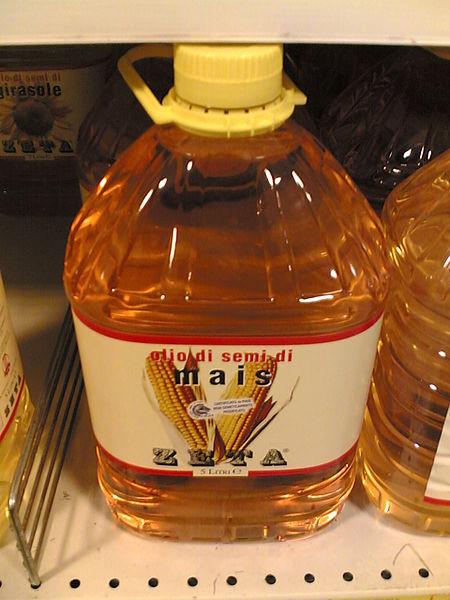Rummage around the fringes of nutrition “science” for a while and you’ll soon bump into a strongly held belief that the vegetable oils most of us consider a healthier option—like canola, soy, corn, safflower, peanut and soy oils—will actually lead to your grizzly (drizzly?) demise, usually via the route of obesity, heart disease and diabetes.
Detractors lump these vegetable oils into the bracket “industrial seed oils,” with hashtags such as #vegoilsucks or #fakefats, and emotionally charged narrative around the “chemicals” used to extract and refine them (in fact, refining to remove free fatty acids, gums and other impurities makes vegetable oils less likely to smoke and oxidize and thereby potentially safer for human health).
For the most part, it’s proponents of the paleo and other “ancestral” diets who promote the theory that seed oils are bad for us. The paleo diet postulates that the only healthy foods are those that were around during the Paleolithic era—which obviously doesn’t extend to a bottle of vegetable oil for your stir fry or salad. But the half-baked theory completely overlooks that subsequent evolutionary changes have allowed us to adapt to a more industrialized diet.
There’s another reason the seed-oils-are-death brigade give for ditching vegetable oils that is more cited than any: their high content of polyunsaturated fats. The irrational hatred runs alongside a conspiracy theory that the American Heart Association, who have always promoted vegetable oils over animal fat, grew their profile based on funding from Proctor and Gamble, makers of the first 100% vegetable oil brand, Crisco.
So, what does science actually say about polyunsaturates, and their effect on health?
The Sydney Diet Heart Study
Much of the backlash against polyunsaturated fats centers around a retrospective data dredge of a study conducted in Sydney, Australia. The original 1970s study involved men aged 30-59 with coronary heart disease who ate either a safflower oil-supplemented diet where 9.8% of calories came from saturated fatty acids and 15.1% from polyunsaturated fatty acids (mostly linoleic acid), or one where saturates contributed 13.5% and polyunsaturates 8.9% of total calories. Survival, measured at the time only in terms of all-cause mortality, was slightly better in the group that ate more saturated fats (typically found in meat and dairy), though multivariate analysis showed that none of the dietary factors were significantly related to survival.
The 2013 re-analysis showed that men with a high intake of safflower oil had a statistically higher risk of dying from a second cardiac event, even though their cholesterol levels fell.
However, in the context of now, these results are of little concern, given nobody recommends linoleic acid intake being as high as in the treatment arm of this decades-old study anymore. The current US recommendations are for 5-10% of energy to be provided by linoleic acid, while actual intake comes in at around 6-7% according to dietary surveys.
For the men in the Sydney study, 70% of whom were smokers with already damaged arteries, piling excessive quantities of linoleic acid into them wasn’t a sensible thing to do in retrospect: we now know that when linoleic acid oxidizes, which it’s chemistry means it has a tendency to do, it creates potentially atherogenic metabolites. Perhaps even more relevant, is that the safflower oil was consumed in the form of margarine, which in the 1970s, was almost certainly likely to have been partially hydrogenated and therefore to contain trans fats, which have since been found to increase risk of heart disease.
The Minnesota Coronary Experiment
The Minnesota Coronary Experiment is also regularly used as evidence for rejecting vegetable oils and embracing animal fats.
The original randomized controlled trial tried but failed to show that replacing saturated fatty acids in the diet with linoleic acid from corn oil reduced coronary heart disease (CHD).
A 2016 reinvestigation, which unearthed and used new raw data, focused on a subgroup of 2355 of the original 9570 participants on whom blood cholesterol measurements were available. It confirmed no overall difference in all-cause mortality between groups, but also found that the greater the fall in blood cholesterol, the greater the risk of death.
However, despite the brouhaha that surrounded this study and the new data, it still didn’t uniquely incriminate polyunsaturates, as the noted association between a fall in blood cholesterol and a greater risk of death occurred both in the group eating a lot of corn oil and the control group. There’s also the confounding complication that illness can result in a fall in blood cholesterol.
More recent analysis lets linoleic acid off the hook
A big multinational review published last year in Circulation gives reason to be fairly relaxed about polyunsaturated fats. The individual-level pooled analysis of 30 cohort studies involved 15,198 cardiovascular events occurring among 68, 659 participants, with medians of follow-up ranging from 2 to nearly 32 years. The analysis showed higher levels of linoleic acid to be significantly associated with lower risks of total CVD, cardiovascular mortality, and ischemic stroke. Arachidonic acid levels—arachidonic acid is a metabolite of linoleic acid that has also come in for some stick as a potential driver of inflammation in arteries —were also not associated with a higher risk of cardiovascular events.
As you were — seed oils won’t kill you!
As unexciting as it is, current dietary advice— including from the American Heart Association—probably has it about right. That advice doesn’t promote large amounts of polyunsaturates anymore, but recommends a balance of monounsaturates and polyunsaturates, with the additional recommendation that polyunsaturates consumed should not be just the omega-6 variety (linoleic acid) but should also include omega-3s.
In terms of an everyday diet, that means consuming a mix of vegetable and olive oils—or if you were to just pick one, canola oil, as it has a good balance of monounsaturates, omega-6 polyunsaturates and some omega-3 polyunsaturates—as well as having 1–2 oily fish meals weekly. Other foods to include as a part of a heart-healthy portfolio of foods include more dietary fiber, less salt, more fruit and vegetables, along with modest alcohol.
The bottom line? “Seed oils” aren’t poison, nor are they the sole dietary answer to heart disease either. It’s 40 years since scientists flirted with this notion, and now it’s time to move on.




